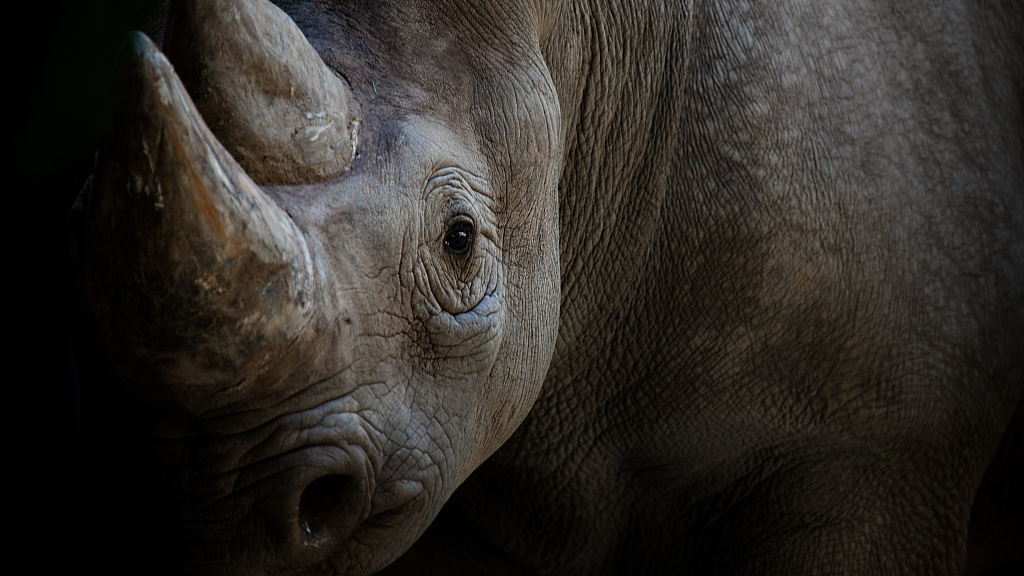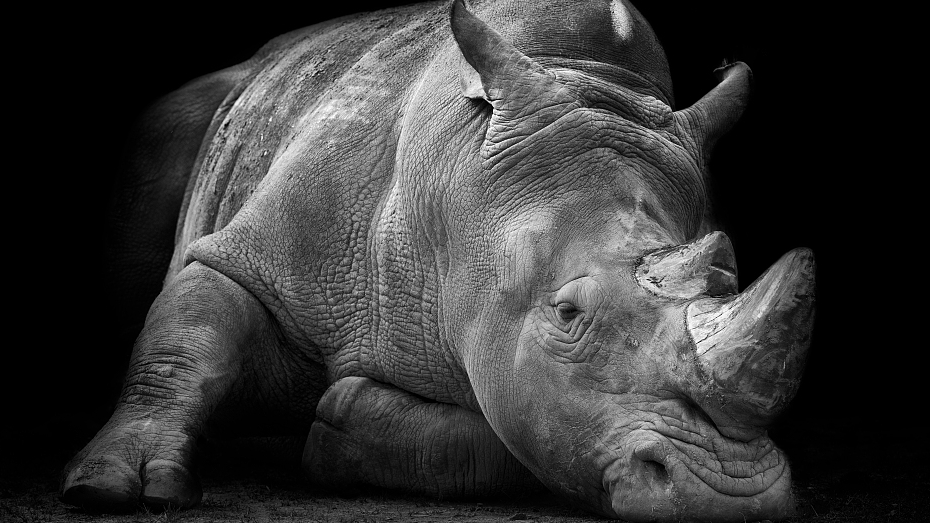
How endangered are rhinos nowadays? /VCG Photo
How endangered are rhinos nowadays? /VCG Photo
World Rhino Day is celebrated on September 22 every year. On this day, we show our concern for the giant ungulate, who is in great danger of extinction.
We all know that the rhinos are endangered, but how are they doing now? Here are some numbers and keywords:

The numbers of extant rhinos may be smaller than you thought. /VCG Photo
The numbers of extant rhinos may be smaller than you thought. /VCG Photo
There are five species of rhinos extant today. Three of them are listed as critically endangered by IUCN, including the black rhino in Africa, the Javan rhino and the Sumatran rhino in South Asia. The Indian rhino is considered vulnerable and the white rhino is near threatened.
The Javan rhino is the most endangered among all five species of rhinos. The estimated number of individuals is 46-66, living in Indonesia as the only group in the wild, without any individuals living in captivity.
Based on the data released by Savetherhino.org, the Sumatran rhino, another critically endangered species, only has fewer than 80 individuals left in fragmented habitats in Indonesia and Brunei. The small population may be decreasing.
In April 2010, the last Javan rhino in Vietnam was killed, with its horn missing. This event marked the extinction of a subspecies of Javan rhinos. On May 27, 2019, the last male Sumatran rhino in Malaysia named Tam was dead. The last female in Malaysia is heavily ill and has lost the ability to reproduce.
On March 19, 2018, the last male northern white rhino, Sudan, died. Najin and Fato, both females, are all that we have now. There are two subspecies of white rhino: the southern white rhinos living in Zambia, Mozambique, Zimbabwe, Botswana, Namibia and South Africa, are doing fine with about 20,000 individuals in the wild. But the northern white rhinos used to reside in Chad, Central African Republic, Sudan and South Sudan, are almost extinct with the only two females left. The good news is, scientists have successfully created embryos through artificial insemination. The subspecies still has hope.

The last two northern white rhinos are guarded 24/7 in Kenya. /VCG Photo
The last two northern white rhinos are guarded 24/7 in Kenya. /VCG Photo
All five species of rhinos are facing multiple threats, such as agricultural activities, human disturbance, and diseases. The only one threatening factor shared by all, according to IUCN red list, is hunting and trapping. Last year, at least two rhinos were killed every single day in Africa.
We still have some good news here: The number poached has been dropping since 2016. Three of five rhino species are already increasing. The black rhino, for example, had experienced a dramatic decline of 96 percent over 20 years in the last century; now it's number is slowly increasing. The Indian rhino used to have a small population of less than 200; now there are more than 2,000 in India and Nepal. It is not too late for us to save these amazing creatures, as long as we stop consuming their horns.
Many countries and organizations are taking action to protect rhinos. While you're reading this article, rangers and volunteers are out there fighting poachers, setting up transmitters and taking care of rhino orphans. What can we do as ordinary people?
You may know this but it's still worth emphasizing again: rhino horns are NOT medicine. It is made of exactly the same substance as human hair and fingernails. They have no medicinal value. So, please leave the horns to the rhinos. Only the rhinos need them.
(Cover image from VCG)
(If you want to contribute and have specific expertise, please contact us at nature@cgtn.com)